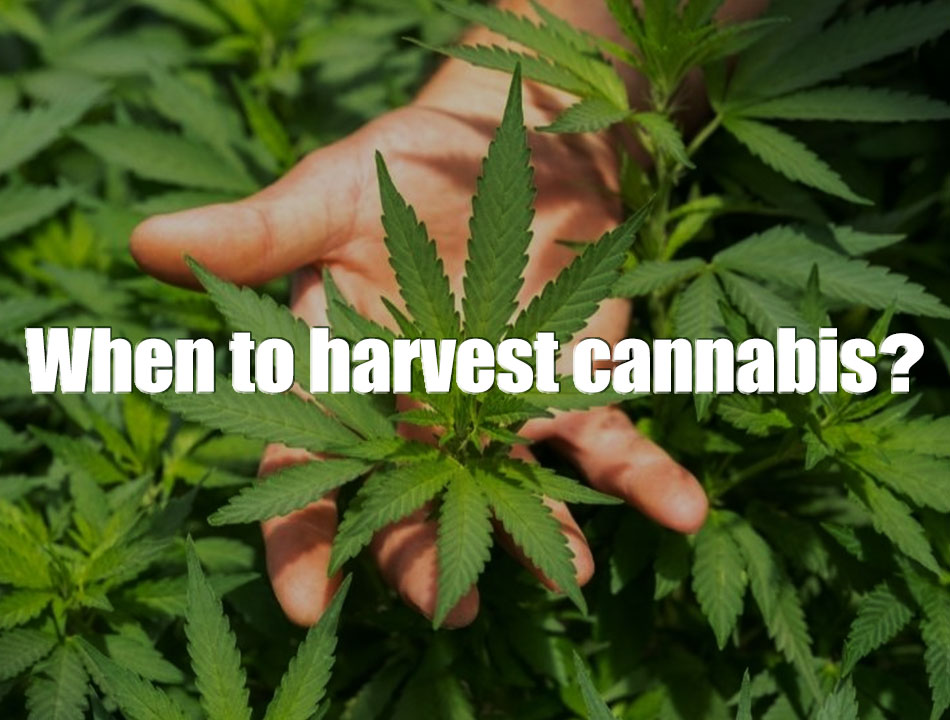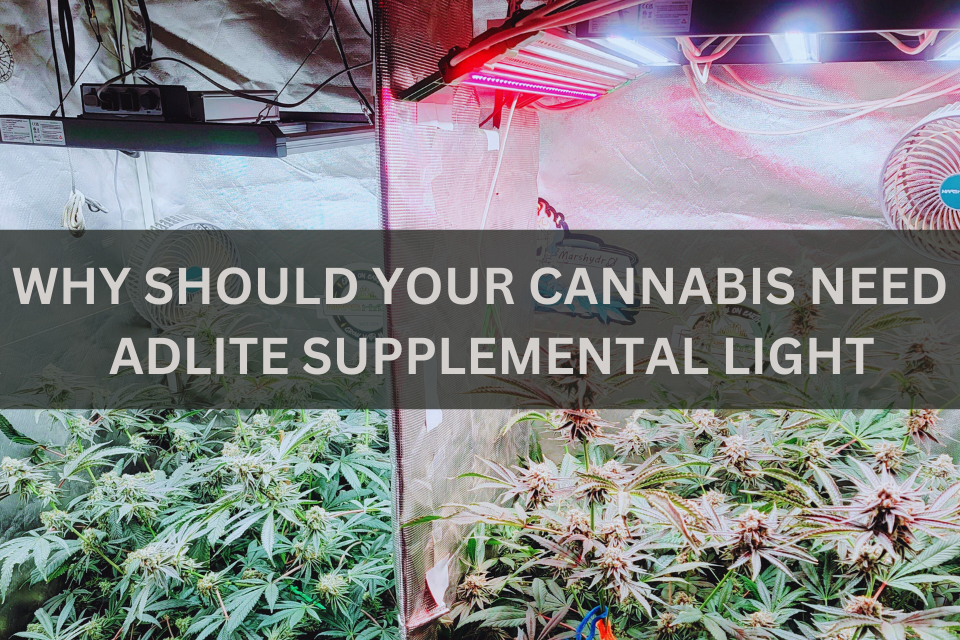
Choosing the Best Commercial LED Grow Lights: Key Factors to Consider
June 7, 2023
Mars Hydro Exhibition Notification: A Must-Visit for Commercial Growers
June 7, 2024Knowing the precise time to harvest cannabis is a critical skill for cannabis cultivators, whether they are experienced growers or enthusiastic beginners. The timing of the harvest significantly impacts the potency, flavor, and overall quality of the final product. Therefore, in this guide, we will explore the various factors and key considerations that help determine the optimal time to harvest indoor cannabis plants, ensuring a rewarding and satisfying cultivation experience.
Importance of Determining the Right Time for Cannabis Harvesting

Determining the right time for cannabis harvest is of utmost importance for both commercial growers and individual cultivators. It is a critical step in the cultivation process that significantly impacts the overall quality, potency, and flavor of the final product.
One of the primary reasons for determining the right time for cannabis harvest is to achieve the desired potency and therapeutic effects. Marijuana plants undergo various stages of growth, from vegetative to flowering, and it is during the flowering stage that the plant’s chemical composition changes dramatically. The cannabis flowers, or buds, produce resinous trichomes that contain cannabinoids, terpenes, and other compounds responsible for the plant’s effects. Therefore, harvesting at the correct time ensures that these compounds are at their peak concentration, maximizing the desired effects such as pain relief, relaxation, or creativity.
Another crucial aspect affected by the timing of the cannabis harvest is the overall quality of the buds. During the later stages of flowering, marijuana plants develop a range of sensory characteristics that contribute to the overall appeal of the product. The timing of the harvest can influence the aroma, flavor, and smoothness of the smoke.
The Necessary Tools You Need to Harvest Marijuana Plants

- Trimming scissors/trimming shears: These specialized scissors or shears are designed to trim the buds from the plant while minimizing damage and preserving the trichomes. They should be sharp and comfortable to use, as trimming can be a time-consuming task.
- Pruning shears: Pruning shears are used to remove larger fan leaves and branches from the plant before harvest. This helps improve airflow and allows better access to the buds during the trimming process.
- Microscope or magnifying lens: A microscope or magnifying lens is essential for examining the trichomes on the buds. It allows you to determine the ideal time for harvest by observing the color and clarity of the trichomes.
- Harvesting knife/blade: A sharp harvesting knife or blade is useful for cutting the main stalk of the plant during the final harvest. It should be clean and sterile to avoid any potential contamination.
- Drying racks or hangers: After harvest, you’ll need a proper drying setup. Drying racks or hangers provide a space to hang the trimmed buds, allowing for proper air circulation and even drying.
- Storage containers: Once the buds are dried and cured, they need to be stored properly to maintain their quality. Glass jars with airtight lids are commonly used for storing marijuana. They help preserve the aroma, flavor, and potency of the buds over an extended period.
- Gloves: Wearing gloves during the harvest is recommended to maintain hygiene and prevent contamination. They help protect the buds from contact with oils, dirt, or sweat from your hands.
- Clean workspace: It’s crucial to maintain a clean and sanitized workspace during the harvest process. Clean surfaces, tools, and equipment help prevent the introduction of bacteria, molds, or pests that could damage the buds.
How Long Does It Take For Cannabis To Be Ready For Harvesting?
The time it takes for cannabis to be ready for harvesting can vary depending on several factors, including the strain, growing conditions, and desired outcomes. On average, the flowering stage of cannabis, when the buds develop and mature, can last between 6 to 12 weeks. However, it’s important to note that different strains have different flowering times, ranging from as short as 6 weeks to as long as 14 weeks.
When Is Cannabis Ready to Harvest?

Cannabis is generally considered ready for harvest when the trichomes on the buds have reached their desired level of maturity. The ideal time for harvest depends on personal preferences, desired effects, and the specific strain being cultivated. Here are some general guidelines to determine when cannabis is ready to be harvested:
Trichome color: The color of the trichomes is a key indicator of readiness for harvest. Trichomes start off clear and gradually change color as they mature. For most cannabis plants strains, the optimal time for harvest is when the trichomes have turned milky white or cloudy. This stage indicates that the cannabinoids, such as THC and CBD, have reached their peak concentration, offering the desired potency and effects.
Trichome transparency: In addition to color, the transparency of the trichomes is also important. When trichomes are clear, it usually indicates that the buds are not yet fully mature and may have lower cannabinoid levels. Clear trichomes are typically associated with a more uplifting and energetic effect. As they become milky or cloudy, the potency and sedative effects tend to increase. If desired, some growers may choose to wait until some trichomes turn amber or brown, indicating a higher THC degradation and potentially a more calming and relaxing effect.
Pistil color: Pistils are the hair-like structures that protrude from the buds. They initially appear white and gradually change color as the plant matures. When most of the pistils have turned from white to dark orange or brown, it can be an indication that the plant is nearing harvest. However, relying solely on pistil color is not always accurate, as they can change earlier or later than desired depending on the strain.
Strain-specific guidelines: Different strains have varying flowering times and characteristics. It’s important to consider the specific guidelines provided by the breeder or seed bank for the strain you are growing. These guidelines can offer valuable insights into the expected flowering duration and optimal harvest timing for that particular strain.
It’s important to remember that these are general guidelines, and personal preferences play a significant role in determining the ideal harvest time. Some growers prefer an early harvest for a more uplifting effect, while others may wait longer for a more sedative experience. Monitoring trichome development and experimenting with different harvest times can help you find the sweet spot that aligns with your desired outcomes.
Signs That It Is Too Early To Harvest
Premature pistils: The pistils, or female reproductive structures, on cannabis buds usually start off as white and eventually change color as the plant matures. If the majority of the pistils are still white or have only just started to change color, it indicates that the plant is not yet ready for harvest.
Clear trichomes: Trichomes are the resinous glands on the surface of cannabis buds that contain cannabinoids, terpenes, and other compounds responsible for the plant’s effects. When trichomes are clear or transparent, it indicates that they have not fully developed and reached their peak potency.
Fluffy and airy buds: Immature cannabis buds tend to be light, fluffy, and lack density. They may not have fully formed and expanded, resulting in a loose and less desirable structure. When the buds are not densely packed, it usually signifies that the plant needs more time to develop and fill out properly.
Underdeveloped aroma and flavor: Cannabis buds that are harvested too early often lack the characteristic aroma and flavor associated with mature marijuana plants. The terpenes, which contribute to the scent and taste, are not fully developed, resulting in a less pronounced and nuanced profile.
Low resin production: If the buds appear to have minimal resin or are not visibly sticky, it indicates that the plant has not yet reached its full resin production potential.
Signs That It Is Too Late To Harvest
Overripe trichomes: If the majority of the trichomes have turned amber or dark brown, it indicates that the plant is past its prime harvest window.
Excessive bud growth: When marijuana plants are left to mature for an extended period, the buds can become excessively large and dense.
Decreased aroma and flavor: If the buds lack the characteristic aroma and flavor associated with the strain, it may indicate that they have been left on the plant for too long.
Increased risk of mold and pests: As marijuana plants mature and the buds become dense, there is an increased risk of mold and pest infestations. The tightly packed buds can trap moisture and create an environment conducive to mold growth.
Frequently Asked Questions about When to Harvest Cannabis
1. Can I harvest my cannabis plant in stages, harvesting the top buds first and letting the lower buds mature further?
A: Yes, selective harvesting is possible. Harvesting the top buds first allows the lower buds more time to mature. This technique is often used to maximize the overall yield while ensuring optimal quality.
2. Are there strain-specific guidelines or timelines to follow for harvesting different cannabis varieties?
A: Yes, different strains have unique characteristics and growth patterns. It’s helpful to consult strain-specific guidelines provided by breeders or growers to determine the ideal harvest timing for a particular strain.
3. How can I use a magnifying lens or microscope to examine the trichomes for harvest readiness?
Answer: Use a magnifying lens or microscope to observe the cannabis trichomes closely. Mature trichomes will appear milky or cloudy, indicating peak cannabinoid levels. Avoid harvesting if the trichomes are mostly clear or have not reached the desired appearance.
4. Should I harvest my cannabis plants based on the desired effects I want to achieve?
Answer: Yes, personal preference plays a role in determining the harvest time. Harvesting earlier can result in more uplifting and energetic effects, while waiting longer can yield a more relaxing and sedative experience.
Final Thoughts
In conclusion, determining the right time to harvest marijuana plants is a crucial step in achieving the best possible results in terms of potency, flavor, and overall quality. By closely monitoring indicators such as trichome appearance, pistil color, bud density, aroma, and resin production, growers can make informed decisions about when to harvest weed.
At last, if you have any other questions about harvesting cannabis or cannabis cultivation, you’re welcome to contact us. Mars Hydro will always online to provide you the most professional guide and suggestions.




